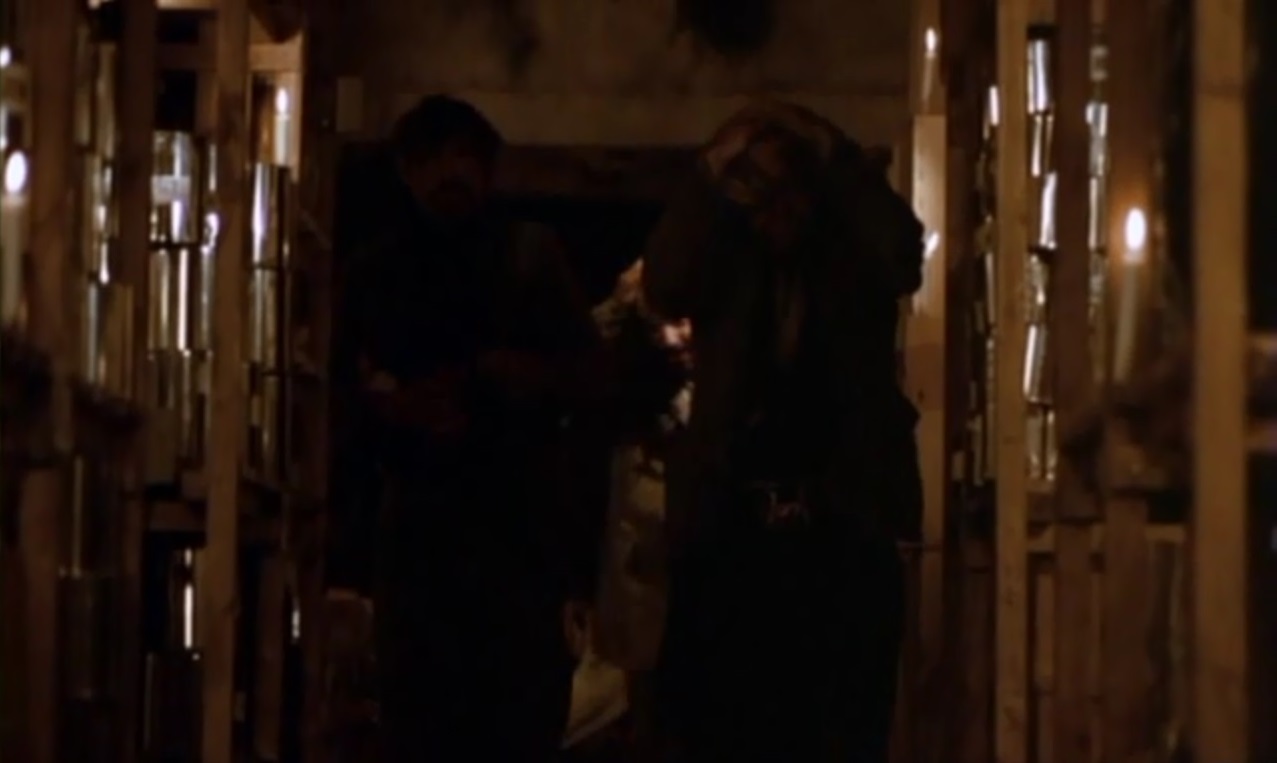The
Blockhouse

On the Normandy
seacoast, where prisoners in a German concentration camp take cover from the D-Day
bombardment, which seals them in amid copious supplies.
Several works are
kindred, Ulmer’s The Cavern and
Korda’s Counter-Attack, also Teshigahara’s Woman
in the Dunes. Kramer’s On the Beach is practically cited toward the end, or rather
introduced as a glancing allusion before the great dark that is still not the
end.
Janet Maslin of the New
York Times, “muddy and slow...” Time Out, “seems designed for terminal
obscurity.” Britmovie, “grim wartime
drama”. TV
Guide, “a worthy idea that sadly goes nowhere.”
When the Whales Came
The complex
allegory has not been observed by critics. What is more odd is that they have
not noticed the pictures by a great English artist on the Isles of Scilly, indeed,
these seascapes of unrivaled beauty and inspiration have been felt as a
distraction from what is, if you are to believe the critics, a tale of no
interest in the first place.
Elements are
taken from Mulligan’s To Kill a Mockingbird, Kramer’s Ship
of Fools, Ray’s Wind Across the Everglades, Miller’s The
Heart Is a Lonely Hunter and, most importantly, Howard’s Fire Over
England, to pronounce the main points and highlights of the picture. An image progresses throughout of flotsam as windfall, a
pod of beached narwhals is seized upon, planks from a ship are gathered up, a
narwhal is returned to the sea and a second pod repelled with torches. The
first is thought to have engendered a curse that depopulates the Isle of
Samson, the gathered lumber is held secret from enquiry, the lone narwhal is desired
as meat and trimmings.
These events
begin in 1844 and conclude in 1914. Dead sailors appear on the shore, and a
life preserver from HMS Valiant. An islander enlists and is lost at sea.
His wife cannot fish, his two children go out in their small boat for a meager
catch that is eked out by a benefactor.
A young witness
to the feast of narwhals has grown up on the Isle of Bryher where the main
action takes place, he is now an aged man and deaf, carving and painting
seabirds out of wood, hence known as the Birdman (the oblique reference to
Frankenheimer’s Birdman of Alcatraz is typical of certain touches
in the film, a sense of confinement on these rugged islands is thus adduced). His productions are very fine but not artistic, the
presence of Helen Mirren as the islander’s wife brings to mind the
creations of Gaudier-Brzeska seen in Russell’s Savage Messiah by
way of comparison.
The Birdman (Paul
Scofield) befriends the children, who find a sculpture on the beach with an
enigmatic message spelled out in seashells, and later a pocketknife and the
words, TRY A PUFFIN. A neighboring villager makes advances toward the widow,
the artist’s studio is burnt down, the Birdman addresses the islanders
over the beached narwhal, recalling the events of seventy years before, they
carry it back to the sea and take fire from the studio to ward off more
narwhals heading for shore. The sailor returns from the sea, not lost but only
missing.
There is an
explanation in all this of how Rees and Paynter achieved their pictures. The
Isles of Scilly appear in these seascapes with the evident detail of Winslow
Homer, southerly islands in a northern sea, beyond the picturesque.
The cast includes
Barbara Jefford, Jeremy Kemp, David Threlfall and David Suchet.